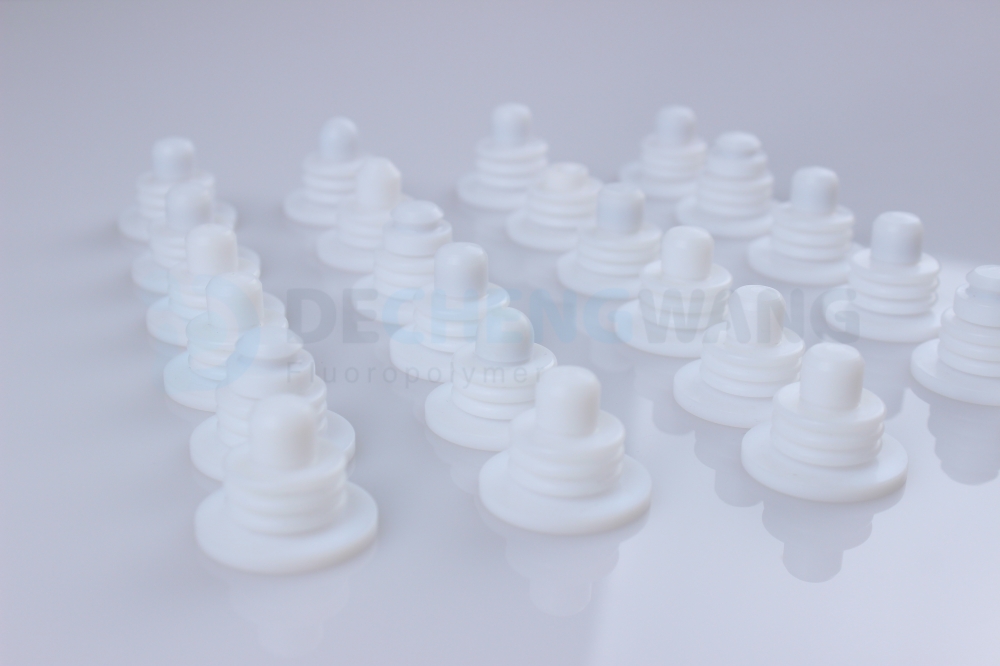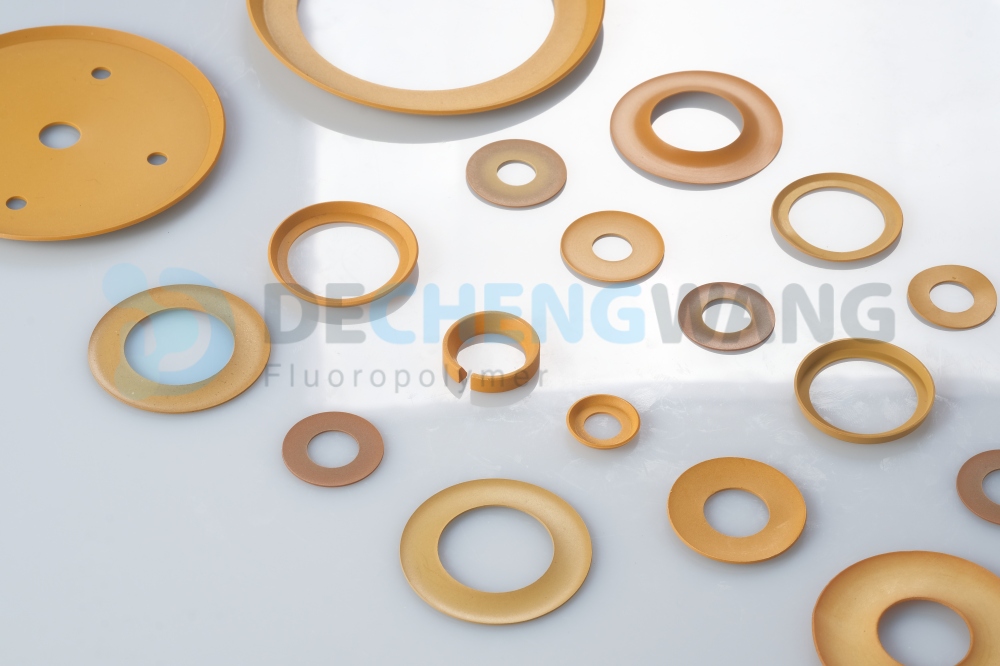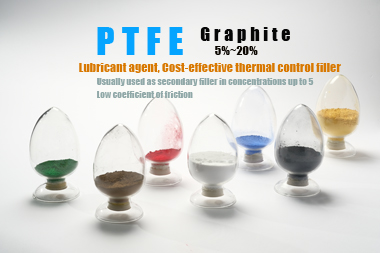Plastics can be tied to a lot of food contamination and food poisoning that has been recorded. To avoid food contamination and food poisoning, it is important to use safe plastics for food processing and preservation. Plastics such as PEEk, PTFE, PET, HDPE, LDPE, and PP are certified safe for food contact. Others like PVC and PS should not be used for food contact.
Now let’s discuss the concept of food grade plastic, its common characteristics, typical applications, acceptable plastic polymers for food and some of the legislation in place for food grade plastic production.
The Standard of Plastics Approved for Food Contact
The Standard of Plastics Approved for Food Contact refers to the established guidelines by the Food and Drug Administration (FDA) and other approved regulatory bodies on food packaging. These guidelines cover the manufacture and storage of food, drink, and medications in food grade plastics.
It also guides producers of food grade plastics on acceptable standards they should subject their plastics to.
Food Contact Material Approved by the FDA
During the production of foods, from gathering raw materials to packaging the finished food, different types of materials come into contact with the food. Some of these materials can contaminate the food if care is not taken. This is why FDA has gone through rigorous tasks to approve some materials for food contact.
For every food, fruit, and even pharmaceutical plastic packaging you own, several of these plastics have been certified and approved for use by the FDA.
Some of the approved plastic polymers include polyethylene terephthalate (PET), high-density polyethylene (HDPE), low-density polyethylene (LDPE), polypropylene (PP), polycarbonate (PC), polyetheretherketone (PEEK).
Machinery and Food Contact Material Regulation
Machinery and Food Contact Material Regulations are different regulatory requirements related to the manufacturing and engineering of food safe plastics. There are different regulations all around the world that direct how food should be processed and what types of materials can come in contact with the food.
There are machinery regulations in place to checkmate the use of substandard machinery or machinery that can contaminate the food. A good example of this legislation is The Machine Directive EC 2006/42, which states that ‘machinery must be designed and constructed in such a way as to avoid any risk of infection, sickness or contagion’.
Metals can leave grease or even metal fragments in the food. This can be bad for the consumers of the food products. This is why in some cases, plastics will be a better substitute for metals in direct food contact.
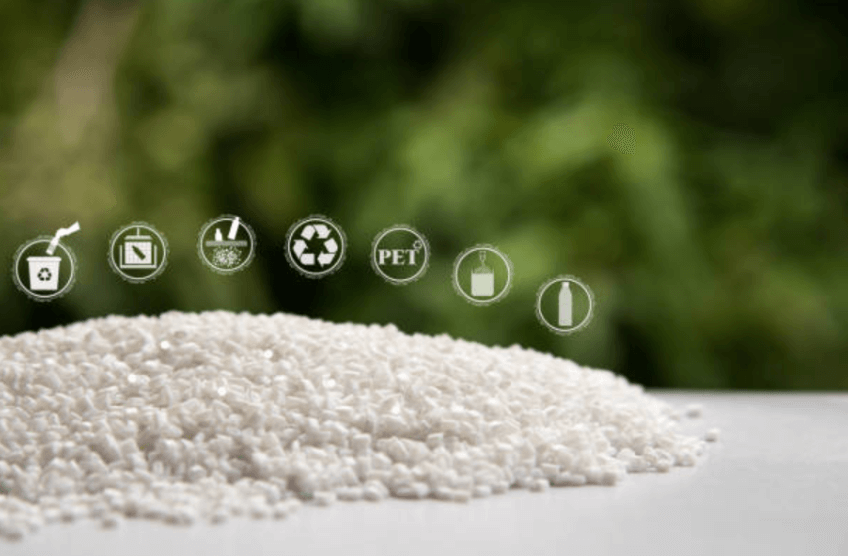
6 Types FDA Approved Food Grade Plastics
Before we list the 6 types of FDA-approved food-safe plastics, let us answer the FAQ ‘What is food grade plastic’. Food-grade plastics are those plastics that have been tested and certified safe for packaging and preserving human consumables.
6 types of food-grade plastic will be introduced in this part. Read to know more.
PEEK– For PEEK Gear & PEEK Part
PEEK is an engineering thermoplastic polymer that has a wide range of applications in the construction, aerospace industry, automobile industry as well as food processing industry. This kind of plastic is commonly used to produce parts of food processing machinery and equipment where stainless steel should have been used.
PEEK Properties in Food Processing and Packaging
Light Weight: Compared to tough materials like steel, PEEK is lightweight while maintaining its textile strength. It is suitable for applications that require lightweight.
Easy-To-Machine: Despite its high strength and thickness, PEEK is relatively easy-to-machine into any component of a food processing machine with the right construction techniques and material.
Design Flexibility: Polyetheretherketone (PEEK) offers various design flexibility. It conforms to numerous sizes and shapes depending on the processing patterns, heat applied, and molding and machining technique. PEEK is known for its great stability as it maintains its form under high temperatures and pressure during food processing and packaging.
Thermal Stability: Likewise, PEEK has high thermal stability and can withstand extreme temperatures without losing its form. It can be used for a temperature of up to +260°C (500 °F) without deforming.
PEEK Material Application in Food Industry
PEEK polymer can be used in the food industry in several ways, including:
Food storage and packaging: PEEK is highly resistant to numerous chemicals, temperatures, and the environment, making it the perfect plastic polymer to store and package food products without compromising the quality.
Food processing appliances and components: PEEK’s thermal stability and design flexibility makes it a perfect choice for building components in food processing machinery. It can be used to produce safe and precise machine components like gears, valves, and pumps.
PTFE- For PTFE Bellows & PTFE Diaphragms
PTFE is a synthetic polymer known for its distinctive profile that makes it exceptional for high-grade engineering and for the manufacture of PTFE bellows and diaphragms.
It is resistant to high temperatures, and chemicals, and can withstand wear and tear without losing quality. In addition, it has non-stick and easy-to-clean properties which makes it an excellent material for the food industry.
PTFE Properties in Food Processing and Packaging
Most Chemically Inert: Like most synthetic polymers, PTFE does not react with chemicals, which makes it a suitable polymer for food processing and packaging.
Nontoxic And Non-Flammable Substances: PTFE is non-toxic and non-flammable, which makes it perfect for producing food product containers. It is also resistant to heat and does not ignite easily.
Low Coefficient of Friction: PTFE has a low coefficient of friction. This property makes it perfect for applications where friction is required. PTFE’s low coefficient of frictional force makes it less prone to wear and tear.
Thermal Stability: Most food processing appliances and components face high temperatures and pressure regularly. PTFE possesses qualities that allow it to withstand these conditions without experiencing damage. It can withstand temperatures as high as 250°C without degrading.
PTFE Material Application in Food
Food storage and packaging: PTFE has a non-stick property. This is why they are mostly used as a non-stick coating for other materials such as pans, baking bowls, trays, and even plates. Also, PTFE films are used to seal heated foods to remain fresh.
Food processing appliances and components: PTFE has a wide application in food processing appliances and components. They are used to produce healthy gaskets and seals for food processing machines. They can also be used to produce conveyor belts and hoses. In addition, PTFE can be used for non-stick coatings on cookware.
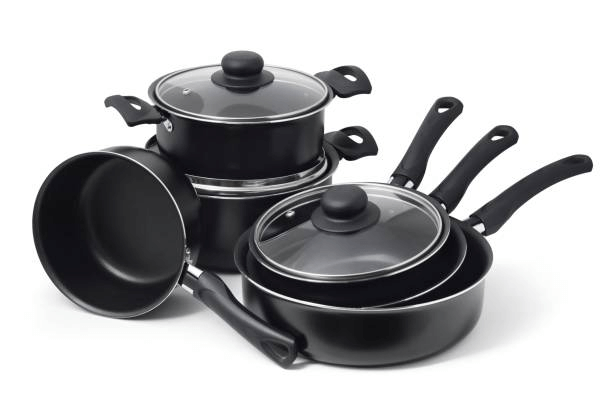
PET – For One-Time Use Bottles
PET or Polyethylene Terephthalate polymers are commonly used in food and beverage packaging to replace the glass bottles formerly in use. When you compare PET bottles to glass bottles, PET has the advantage of being lightweight.
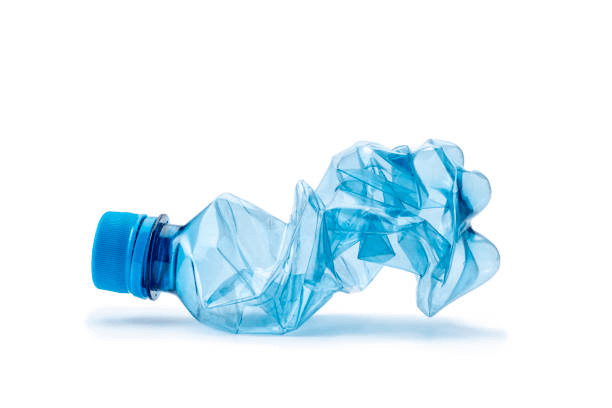
PET Properties in Food Processing and Packaging
Great Wear Resistance: PET polymers possess great resistance to wear and tear. They are used in packaging food products with long shelf life. They can also be recycled after use into alternative PET containers.
Strength: PET polymers can withstand high temperatures and unfavorable physical conditions, and are also stronger than a wide variety of chemicals and climate conditions. They are perfect for packaging highly-gaseous beverages.
Stability: Many food products contain chemicals that can react, however, PET polymers are high stability and possess low permeability. This is essential in packaging water and beverages.
PET Material Application in Food – Time Use Bottles
They are mostly used in the food industry for packaging water, soft drinks, fruit juice, oils and condiments, and other liquid foods.
HDPE- For Juice and Milk Jugs
HDPE is a polymer material excellent for its lightweight properties, chemical inertness, and ability to withstand high-impact environments. It is an FDA and USDA-approved plastic polymer used in manufacturing juice and milk jugs
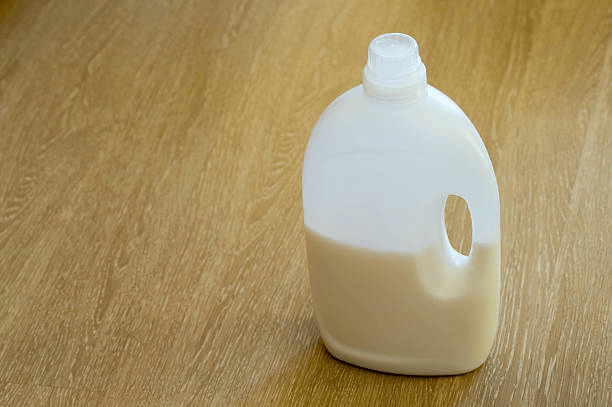
HDPE Properties in Food Processing and Packaging
Resistance To Mold: Mold growth in food production requires the presence of moisture. HDPE is known to be resistant to moisture due to its low permeability. HDPE can also be treated to effectively withstand mold growth.
Corrosion: HPDE is a non-corrosive material that can withstand numerous acids, bases, and other chemicals. This is perfect in the application of food packaging and processing.
HDPE Material Application in Food – Juice and Milk Jugs
HDPE is used to produce Jugs and containers for storing juice and milk. They help to keep the juice and milk fresh all day.
LDPE- Bread and Produce Bags
LDPE is a similar polymer to HDPE with a power tensile strength. It is not as rigid as other plastics, hence it is used in making soft or flexible food packages. It cannot withstand wear and tear and can easily break upon strong impact.
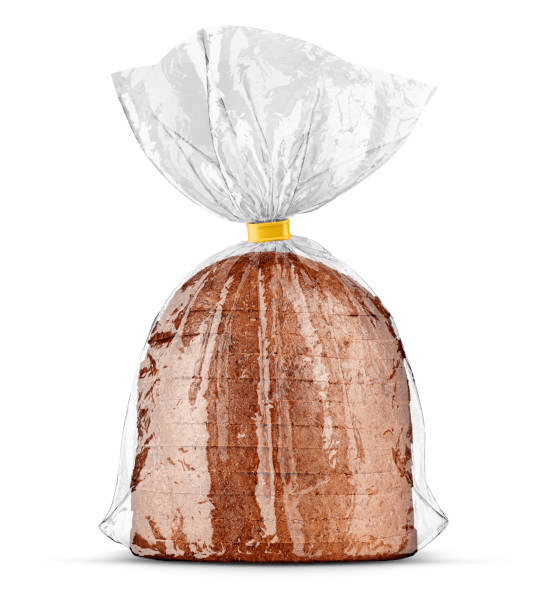
LDPE Properties in Food Processing and Packaging- Don’t Leach Chemicals
LDPE is a low-density plastic that does not leach, deionize, or react with chemicals. It is a suitable food package since it does not transfer chemicals into the food products. It can be used to package products with a short shelf life (such as bread or pastries) as it is not resistant to strong mechanical pressure or UV radiation, else it degrades and becomes brittle.
LDPE Material Application in Food – Bread and Produce Bags
LDPE is a flexible, reusable, and stable plastic material that is used in preserving the freshness of food (e.g. bread). It is also used to make certain flexible backpacks as its low melting point allows it to be shaped into various objects easily.
PP- For Medication Bottles & Food Boxes
PP or Polypropylene is majorly used in the production of single-serve containers such as medication bottles and storage boxes. It is a versatile FDA-approved polymer that is durable, lightweight, and resistant to several environmental conditions.
PP Properties in Food Processing and Packaging
High Melting Point: PP has a high melting point compared to other low tensile strength plastics and can withstand temperatures as high as 121°C. Hence, many medication boxes (such as injection moldings) made with Polypropylene can be sterilized under high heat without damaging the container or destroying the medications.
Inert Material: It does not react with chemicals and holds any kind of food you store properly. Foods stored in Polypropylene maintain their freshness as there is no change in quality or appearance.
PP Material Application in Food
Food Storage Boxes: Many storage boxes are made with PP because of their inertness and ability to withstand high temperatures. Thus, PP containers can be microwaved to reheat food without experiencing degradation of the storage box or damage to your food.
Which Plastics Are Safe?
All the plastics we’ve mentioned above are food safe plastics. These plastics are approved by the FDA, USDA, and NSF for use in food packaging and processing.
They possess certain features that deem them non-toxic to overall human health. These features include chemical inertness – preventing them from being reactive with the chemical constituent of the food produced – ensuring safety, freshness, and quality for the set time.
Commonly used plastics for consumables are Polypropylene (PP), high-density polyethylene (HDPE), low-density polyethylene (LDPE), and polyethylene terephthalate (PET) is used in packaging everyday food products like bread, beverages, milk, juice, grocery bags, and food storage boxes.
These plastic types can be regarded as plastics safe for food since they are FDA-approved and popularly used in packaging consumable products.
2 Types of Plastics You Should Avoid Using as Food Storage Containers
When it comes to storing your leftovers in a container, there are some plastic storage containers you should avoid. These containers are not FDA-approved or certified to come in contact with food. They are not made with inert materials and can release harmful toxins into your food and the environment when they are heated.
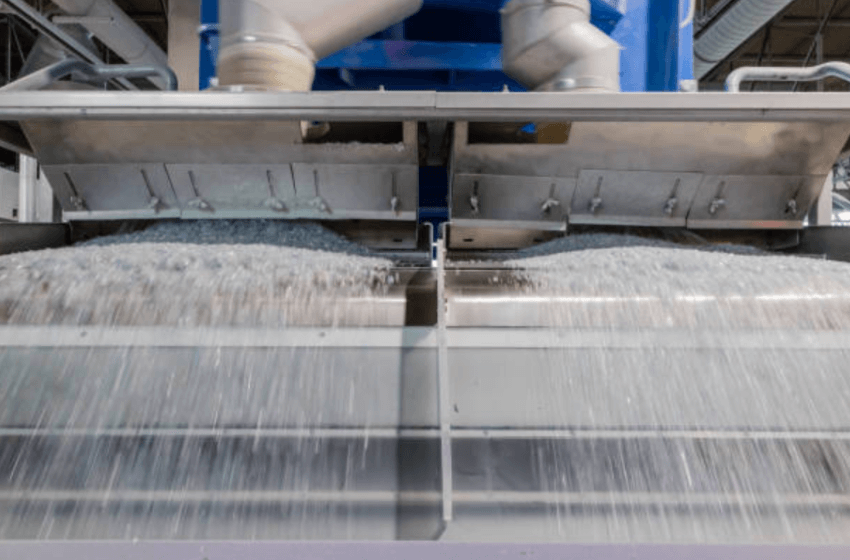
PVC (Polyvinyl Chloride)
PVC is mostly used in the production of building and plumbing materials. It contains phthalates that are used to increase its durability. This additive can be released from the plastic into food products under high heat. Its toxins can cause long-term health issues.
PVC Material Properties
Thermoplastic: Thermoplastics like PVC can deform at an unbearable temperature. PVC releases toxins such as phthalates, organotins, and hydrogen chloride into the environment. It is one of the leading causes of environmental and food pollution and has contributed to the death of many.
Contains Numerous Toxic Chemicals: PVC contains hundreds of toxic chemicals. During its life cycle, it has been shown to release dangerous chemicals at each stage. These chemicals are partly responsible for the environmental degradation we currently face and contribute to the toxic additives in the environment.
PS (Polystyrene)
For decades, the FDA has announced Polystyrene as a dangerous plastic for direct contact with food processing and packaging. These plastic materials should not be in contact with foods and other consumables. This is because PS can leach chemicals when they are used to store food products for a long time.
PS Material Property
Low Melting Point & Low Thermal: PS has a low melting point and cannot withstand temperatures as high as 250°C. Thus, it cannot be used to produce microwave food storage boxes.
Conductivity: PS is a non-conductive material and prevents electricity to flow across. When it comes to food, PS is unable to maintain its temperature, hence, it is useless in manufacturing food storage boxes.
Can Leach Styrene: Under hot temperatures, PS can release styrene which is harmful to the body.
May Come Along with Harmful Health Effects: According to the Environmental Protection Agency (EPA), styrene, a residue of polystyrene poses numerous dangers to the environment and central nervous system, causing fatigue, dizziness, and migraine.
Other Applications of Food-Grade Plastics
Food-grade plastic is usually designed to be in contact with food. Hence, they must be safe, inert, and toxin-free, allowing for the highest quality at all times. However, not all food-grade plastics are designed to be food containers or consumables carriers, some are designed for other purposes.
These purposes can be in the field of production and agriculture, transportation and shipment, medicine, and beauty. Food-safe plastics allow for versatility and can be processed into other kinds of containers in different sizes, shapes, and colors.
Pharmaceutical Industry
Pharmaceutical companies use food-grade plastics during drug processing and packaging. They use medication bottles and storage for keeping the medications safe and uncontaminated. Food-grade plastic components that come into contact with drugs should be sterile and pure at all times.
These food-grade plastics are often subjected to various procedures such as autoclaving and radiation that ensure sterility. Since they are FDA-approved, medications can be stored for a long time without spoilage. For instance, HDPE can be used to produce bottles that will hold syrups.
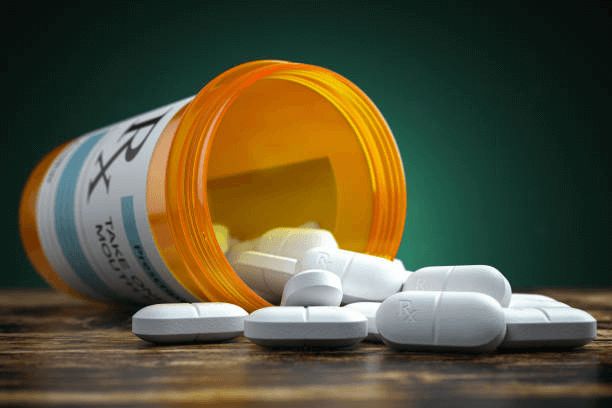
Agriculture Industry
Food-grade products are used in the agricultural industry to ensure the safety and quality of agricultural produce. They are commonly used in the storage of grains and foodstuffs to preserve their quality until consumption.
Low-density polyethylene (LDPE) can be used in the production of polyethylene bags that can be used to wrap foodstuff and agricultural produce in the store. This protects it from infestations and contamination.
In addition, PP is a strong plastic polymer that is used to produce crates that are used to transport agricultural produce from the market to where they are bought.
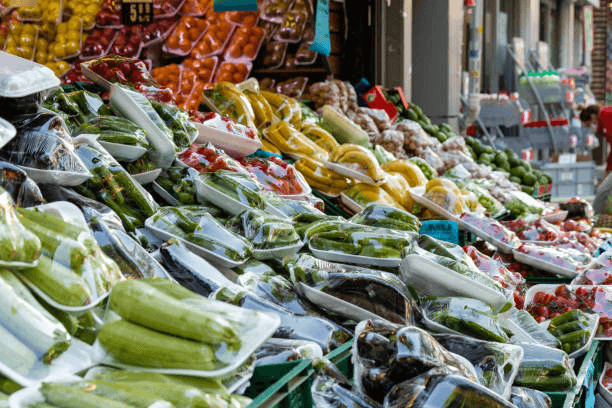
Ingredient Trucks
Ingredient trucks are used in transporting agricultural produce from the farm to the market, stores, or schools. They are essential as they help bridge the distance between the product and the end consumers. Food-grade plastics can also be used to produce ingredient containers that hold agricultural products throughout the journey.
These and many more are products of food-grade plastics. Food-grade plastics are chosen due to their ability to withstand wear and tear, keep agricultural produce fresh for a long time, and protect the fruits from infestation.
Bottle Skips
Bottle skips are always in demand in the hospitality industry. They are used in the food and beverage industry to collect, wash, and recycle glass and plastic bottles and cans in restaurants and pubs. Food-grade plastics are often used to produce bottle skips.
HDPE is often preferred for bottle skips because of its high stability, inertness, high temperature, and ability to withstand pressure in the production of bottle skips. Food-grade plastics allow recycled bottles to stay clean for the next use since they do not allow the growth of moisture, mildew, or corroding.

DCW: Provide PEEK and PTFE Ideal Choice for the Food Industry
DECHENGWANG (DCW) is a plastic manufacturing company based in Shenzhen, China. With years of servitude under our belt, we offer the highest quality of plastics you will ever find in the market.
We employ only high-quality fluoropolymer materials like PTFE, modified PTFE, PTFE compound, PEEK, PFA, PCTFE, and PVDF. In addition, we reproduce all kinds of designs, regardless of how complex they are for our dear customers. Here’s why you should work with us:
Tight Process Control
Using high performance we design and manufacture a variety of products that are reliable and stable for our customers. Our plastic-producing procedures employ a defined set of strategies to produce high-quality and precise polymers for use.
Accurate Quality Standards
At DCW, we only adhere to accurate quality standards during production. Thus, our customers are assured of the best products when they reach out to us.
Provide a Wide Range of PEEK and PTFE Components
We only work with the top raw material suppliers, like Shandong Dongyue Polymer, POLYFLON, and Dyneon, as well as offer numerous designs for your customization. You think it, we produce it according to your demand.
Conclusion
DCW offers a wide range of products that allows our customers to get their needs satisfied. We offer fluoropolymer machined components such as bellows, O-rings, insulators, seals, and more.
These components can be customized to fit whichever part you need. Also, we offer semi-finished products with great quality; they include PTFE tubs, rods, films, and sheets.
We have various safe plastics for food with varying features to suit your taste. You can choose from our raw or refined PTFE, PEEK, PVDF, PFA, PTFE, and PTFE compounds. Can’t find what you want in our offers? Our customers can also get access to our customized orders, which allows us to create new materials or components.
Irrespective of your field of industry, we have something just for you. At Dechengwang, no business or need is left behind. Distance is not a barrier to us as our services are spread far across continents. Why not reach out to us today for your needs and enjoy the best service you can ever dream of?

